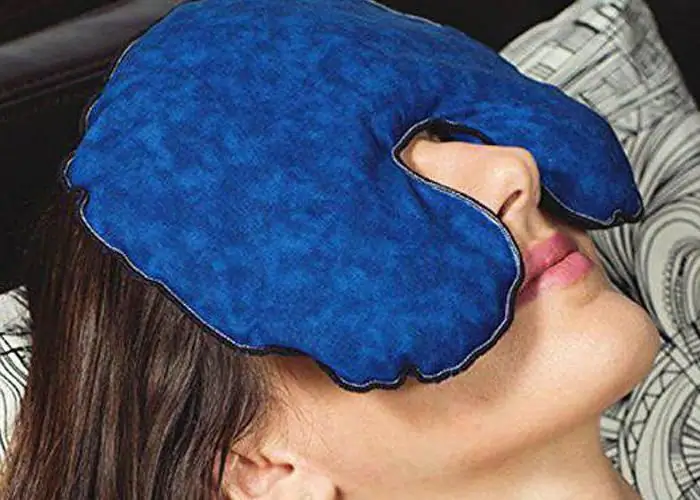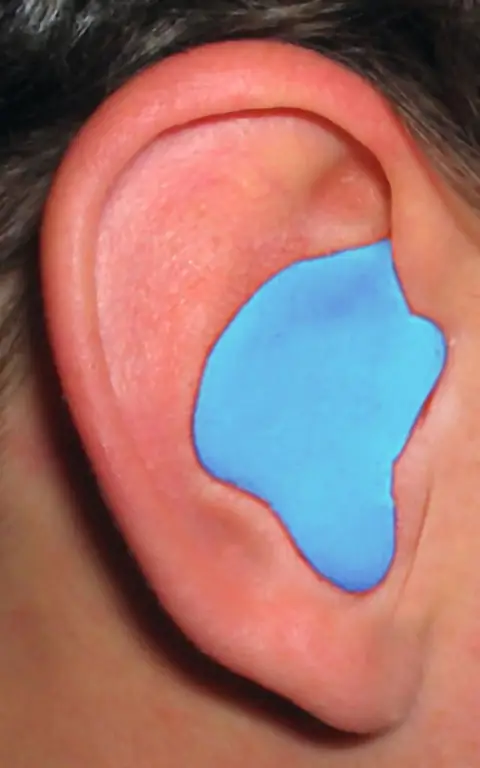2026 Author: Priscilla Miln | [email protected]. Last modified: 2025-01-22 17:55:26
To feel more comfortable and isolate themselves from noise or foreign objects, people use a convenient thing - earplugs. They are generally made from a soft, pleasant, hygienic material that is easily inserted into the ears in such a way that ambient sound vibrations or water are no longer an object of concern. Usually they are used, for example, in workshops, in production, where working mechanisms create loud sounds that can adversely affect the human body, namely its central nervous system.
Earplugs are the perfect way out of this situation. Taking into account the interests of consumers, manufacturers are constantly improving their product, as a result of which earplugs may differ in shape, size, and degree of noise absorption. Also, for comfortable use of earplugs, you need to have a little understanding of how to properly insert earplugs.
Types of earplugs
- Regular earplugs for sleeping. As a rule, they can be made from various materials: silicone, polyvinyl chloride, polypropylene, polypropylene, and less often from wax. Sheet silicone earplugs are usually not used for sleeping, asthey are not very soft. Plastic silicone earplugs, on the contrary, fit comfortably and gently into the ear canal. Earplugs are also made from thermoplastic silicone, which is long lasting but finicky to care for.
- Earplugs for musicians. Hearing loss for professional and avid musicians is career end, so they are forced to use earplugs during their concerts. Mostly they are made to order for musicians.
- Earplugs for ear pain relief. Usually they are used when flying by plane.
- Swimming earplugs are used to keep water out of the ear.

Instructions on how to insert earplugs into ears
After buying earplugs, everyone may have this question. How to properly insert earplugs into your ears so as not to hurt yourself and not damage your hearing organ? This procedure really requires a careful and careful approach. Let's take a closer look at how to properly insert earplugs. It doesn't take long.
- Silicone earplugs just need to be inserted into the ears, as they do not change their shape. However, these earplugs are not comfortable because they may not fit the ear canal.
- Polyurethane earplugs need to be rolled into a tight, narrow cylinder before use. Then plug the auditory opening, while leaving a small piece of material so that it can be safely pulled out.
- Before using earplugs towhile in water, you must first carefully check the ear canal for inflammation. If the earplugs are painful, remove them and see a doctor.
For more information on how to properly insert earplugs, please contact an experienced earplug.

Safe application
To avoid getting dust, foreign substances, pathogenic bacteria into your ears, you need to observe hygiene: wipe earplugs before use, clean your ears with cotton swabs dipped in an antibacterial solution, do not give your earplugs to strangers so as not to catch a virus or what any disease of the auditory organ, do not insert too deep into the ear holes.

Contraindications
Before using earplugs, make sure that the material from which they are made does not cause an allergic reaction or ear inflammation. If a person has frequent nasal congestion, then for safety reasons, it is not recommended for him to use ear plugs, it is best to consult a doctor for help in such a situation.
Recommended:
Nursing pads: how to use, instructions for use

What are nursing pads for? Their advantages and disadvantages. Types of pads for feeding and various manufacturers. The right choice of breast pads and instructions for use. Proper care and prices for products. Ways to wean a child off breast pads
Reusable chemical heating pad: how to use? S alt heating pad: instructions for use

Autonomous s alt heaters are used for first aid, treatment of colds and purulent diseases, injuries and in many other cases. Knowing the instructions for use, using a heating pad, you can make a warming and cooling compress
How to properly comb a cat: instructions, features of the procedure

Not all owners have an idea of how to properly brush a cat. But such manipulations are very important for the animal. Thanks to combing, it is possible to remove excess hair and get rid of the villi remaining on clothes
"Albucid" for a child: instructions for use, features of use, reviews

Inflammatory diseases of the eyes due to the immaturity of their own immunity in children appear quite often. At the same time, the first symptoms in newborns and babies who cannot speak are very easy to miss, because they cannot tell about unpleasant sensations. In any case, Albucid often helps in the fight against such pathologies. Doctors prescribe the drug to a child because of its relative safety, ease of use, and most importantly, effectiveness
Is a vibrator harmful: types, classification, gynecologist consultation, instructions for use, pros and cons of use

We have put together some interesting information for you, which is useful to read before you buy a little helper. Let's find out what positive qualities can be found in a toy, whether a vibrator is harmful, how to choose it

